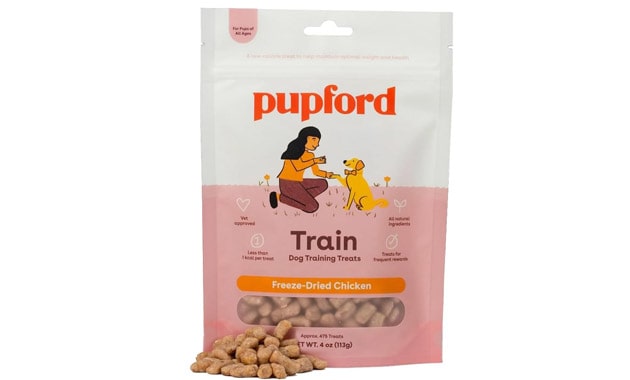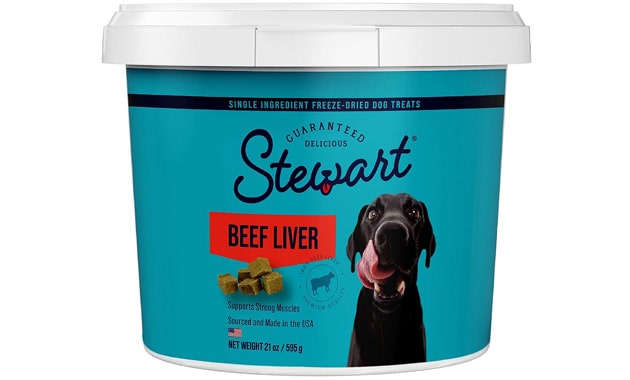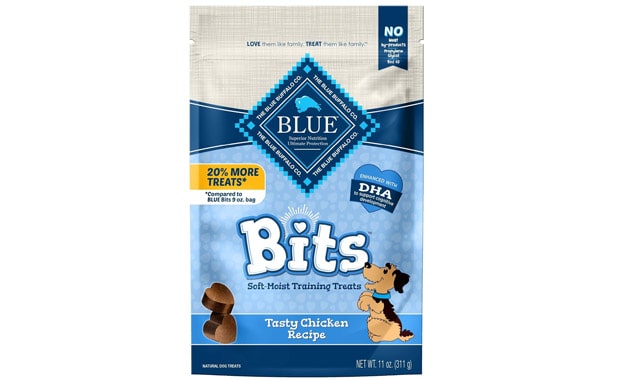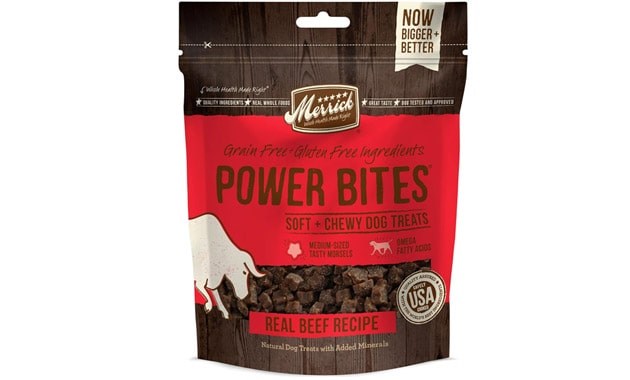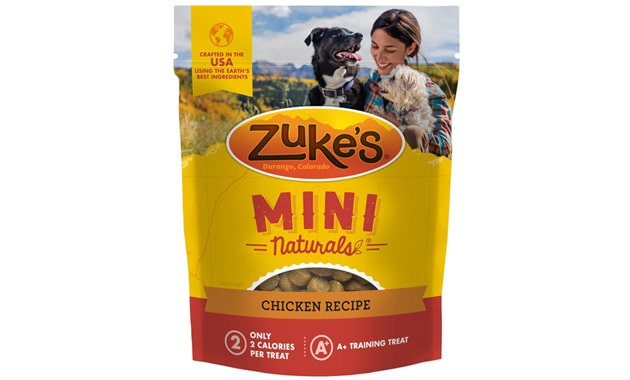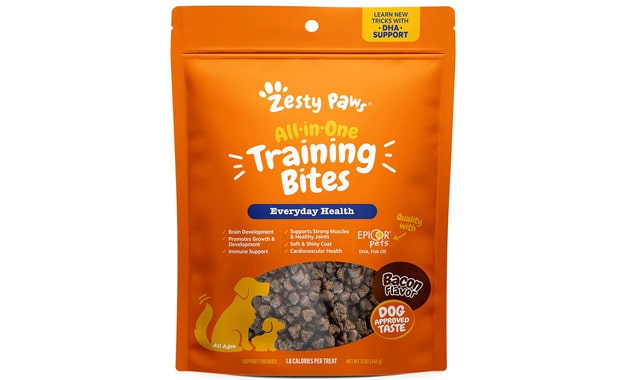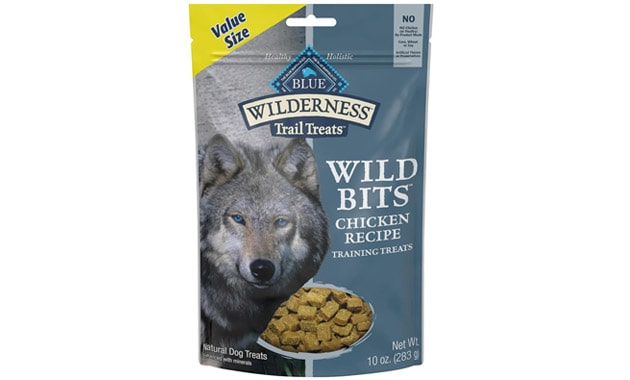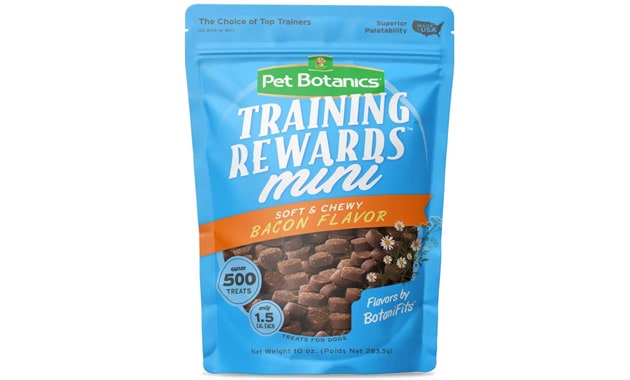
Tips for Choosing Best Training Treats For Puppies
Look for Soft, Bite-Sized Treats
Puppies have tiny mouths and tender teeth, so you’ll want treats that are petite, soft and easy to chew. Look for treats about the size of a pea or smaller so they won’t overwhelm your puppy’s mouth or pose a choking hazard. Soft, chewy treats are ideal, as very hard treats can damage young teeth and delicate jaws. Things like tiny training biscuits, soft jerky pieces, mini cheese nibbles or small meaty tenders make good options. Avoid extra hard, crunchy treats at this stage.
Focus on Single Ingredient Treats
Treats with just one ingredient like chicken, liver or cheese tend to be gentle on puppy tummies. At 8-12 weeks old, their digestive systems are still developing and may have trouble processing treats with multiple ingredients, artificial additives or fillers. Steer clear of treats with artificial colors/flavors, preservatives, by-products or corn and wheat. Sticking to single ingredient treats minimizes tummy upsets during this sensitive time.
Look for Limited Calorie Treats
Puppies need more calories for growth, but too many treats can lead to obesity down the road. Search for low calorie training treats under 3 calories each, and break treats into smaller pieces to further limit calories per reward. Things like dehydrated chicken, freeze-dried liver, and low-fat string cheese fit the bill. Track treats as part of your puppy’s daily diet and adjust food accordingly.
Consider Allergies
Some puppies may have food allergies or sensitivities. If your breed is prone to allergies or your puppy seems itchy or has tummy troubles, try a hypoallergenic treat made with novel proteins like duck, venison or rabbit. Limiting treats to one protein source your puppy has not had before can help identify allergens. Consult your vet if allergy issues persist.
Select Soft Texture for Toy Breeds
Tiny toy breed puppies have even smaller mouths and jaws than larger pups. For them, look for super small soft treats that are easy to nibble and chew. Things like tiny jerky bits, mini training biscuits, small cheese cubes, or pea-sized meat treats are ideal. The softer the texture, the better for these little guys. Avoid hard treats that could cause pain or damage.
Get Veterinarian Approval
It’s always smart to check with your veterinarian before giving your puppy any new treat, especially if they have known health conditions. Your vet can advise you on appropriate treat textures, sizes and ingredients for your unique puppy. They can also recommend avoiding specific ingredients your puppy may be sensitive or allergic to. Getting the OK from your vet ensures treats won’t interfere with any medications or dietary needs.
Select Natural Ingredients
Check the ingredient list and aim for treats made with real food ingredients you recognize. Things like real chicken, beef liver, cheese and peanut butter are ideal. Avoid treats with artificial preservatives, colors, flavors and sweeteners. These additives provide no nutritional value and may cause adverse reactions in some puppies. Reading the label helps you determine if treats are made from quality natural ingredients.
Avoid Fatty Meats Like Bacon
It can be tempting to give puppies fat-laden treats like bacon, sausage or hot dogs for high-value rewards. However, these are unhealthy options that can quickly lead to obesity and other issues like pancreatitis. Lean meats like baked chicken, venison and fish, or plant-based proteins like carrot and sweet potato make much healthier training treats for puppies.
Check Sugar Content
Many mass-produced pet treats contain lots of hidden sugar, which is unhealthy for puppies. Excess sugar can spike blood sugar, promote hyperactivity and weight gain, and possibly increase risk for diabetes later on. Check carb content on labels and select low-glycemic treats made without added sugars. Things like freeze-dried meats, veggie chews and air-popped popcorn make good low sugar options.
Rotate Treats for Variety
Continuously giving any one treat can encourage pickiness in puppies. Rotate between 3-5 different healthy treat options to provide taste and texture variety. Things like tiny cheese cubes one day, chicken pieces the next, and carrot coins after that keeps their interest and ensures a balanced diet. Just introduce new treats gradually in case of tummy upset or allergies.
Use Their Kibble or Wet Food
Your puppy’s regular kibble or wet food makes an easy training treat right at your fingertips. Use your puppy’s daily diet and simply deduct a few pieces of kibble or spoonfuls of wet food from their meal to use for training. This ensures treats are healthy, balanced and part of their diet. Plus, it teaches them to work for their regular food!
Try Frozen Treats
Frozen treats provide longer lasting chewing enjoyment to puppies while soothing sore gums from teething. Things like frozen mashed banana, apple slices, yogurt tubes, or Kongs stuffed with wet food or peanut butter make refreshing frozen rewards. The cold feels good on their mouths and keeps treats interesting. Just monitor carefully to avoid choking or aggressive chewing.
Make Your Own Treats
With guidance from your vet, you can also make healthy homemade puppy training treats with things like baked chicken, liver or sweet potatoes. Homemade allows you to control the quality of ingredients. However, follow recipes carefully to ensure proper nutritional balance. Check with your vet before introducing any homemade food items.
Summary
Choosing the right training treats for your puppy requires paying close attention to texture, size, ingredients and nutritional value. Softer one-ingredient treats in tiny sizes are ideal for puppies. Checking with your veterinarian ensures treats align with your puppy’s unique dietary needs and health conditions. Rotate several healthy low calorie natural treats to keep puppies engaged and avoid pickiness. Homemade treats are also an option when recipes are properly vetted. With thoughtful treat selection, you can reward your pup while setting them up for healthy lifelong habits.
